Yeovil Trades & Traders
Alfred Gillett
Ironmonger of the Borough
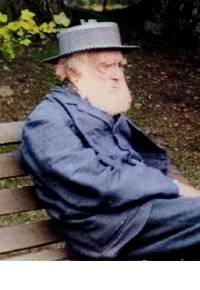 Alfred Gillett
was born in
Langport on 24
February 1814,
the eldest of
the eleven
children of
Quaker
shopkeeper and
chemist John
Gillett (b1786)
and his wife
Martha.
Alfred Gillett
was born in
Langport on 24
February 1814,
the eldest of
the eleven
children of
Quaker
shopkeeper and
chemist John
Gillett (b1786)
and his wife
Martha.
John and Martha's children, all born in Langport, were; Alfred, Maria (b1816), Sarah Dawe (b1818), Ellen (b1820), John (b1821), Sarah (b1821), Mary Dawe (b1823), William (b1825), John (b1826), Francis (b1827) and George (1829-1908).
In the 1841 census, the family were recorded living at Overleigh, Street. 25-year-old Alfred gave his occupation as an ironmonger. He was to remain a lifelong bachelor.
By 1843, Alfred had moved to Yeovil and entered a partnership with a distant relative, the established ironmonger Josiah Hannam, a prominent Quaker. The business in the Borough, was known as Hannam & Gillett from that time.
Hannam & Gillett were noted as the occupiers of the Borough premises in 1847 when they were put up for sale by the owner for the sum of £1,200, but there were no bids.
In the 1851 census, 54-year-old Hannam gave his occupation as "Ironmonger, firm of 2, employing 13 men", while 37-year-old Alfred Gillett gave his occupation simply as an ironmonger. Living with them above the shop premises, were three ironmongers' assistants (including Alfred's 23-year-old brother, Francis), a housekeeper and a house servant.
In late November 1854, during the Crimean War, the Yeovil Local Patriotic Fund was created as part of the national scheme to support widows and orphans of servicemen killed in action. Support in Yeovil was instantaneous. A list of subscribers was published in the Western Flying Post's edition of 12 December 1854. On first glance it may seem that people were being less than generous until it is realised the £5 in 1854 would be worth around £600 at today's value. The total amount listed was some £427 - in excess of £50,000 at today's value - and all raised in the first week of the appeal. Alfred subscribed £2 to the fund (around £240 at today's value).
By 1861, still living above their ironmongery shop in the Borough, both Hannam and Gillett gave their occupations in the census as "Ironmonger employing 17 men and 8 Boys". Living with them above the shop were 22-year old assistant Thomas Denner, another assistant, an ironmonger's apprentice, a housekeeper and a general servant.
In April 1862, Alfred was listed among those subscribing to the new west window in St John's church in memory of Prince Albert. He subscribed £3 (around £330 at today's value).
Hannam & Gillett's partnership was dissolved, and in 1865 the business was bought by John Petter of Barnstaple, Devon, who gave it to his son James Bazeley Petter as a wedding present although the business was advertised as "John Petter, Ironmonger" until at least 1878.
On the sale of their business, Josiah Hannam moved back to Gillingham to run the family silk business. Alfred Gillett retired, and in the 1871 census he was listed as a retired ironmonger and as visitor staying with his younger brother George and his family in Black Jack Street, Cirencester, Gloucestershire.
After retirement, Alfred moved to Street in 1870s where he was able to pursue his passion for palaeontology, taking advantage of the early nineteenth-century expansion in quarrying that had developed around the village. He amassed a fine collection of Street Ichthyosaurs, including eighteen near-complete Ichthyosaurs, a Plesiosaur and over 180 smaller specimens. It represents the once prolific fossil locality of the Blue Lias quarries of Street, now closed and back-filled, and rivals the major collections at the Natural History Museum and the Universities of Oxford and Cambridge. In 1887 the collection formed the core of a small Geology Museum in Street, but since the museum’s closure in 1948 the collection remained largely unstudied in storage.
By the time of the 1881 census, Alfred was listed in the place of his childhood - Overleigh, Street. By now aged 67, Alfred lived with a housekeeper and a domestic servant. He gave his occupation as "Retired Ironmonger, Farming 9 acres, employing 1 man". In the following 1891 census he was still living at Overleigh with a domestic servant and gave his occupation as a retired ironmonger. In the 1901 census, still at Overleigh with a housekeeper and a domestic servant, 87-year-old Alfred again gave his occupation as a retired ironmonger.
Alfred Gillett, gentleman, died on 24 January 1904 at Overleigh, Street. He was aged 89 years and 11 months. His will was proved at Taunton in the following March and his effects were valued at £28,496 2s 3d (in excess of £3 million at today's value).
map
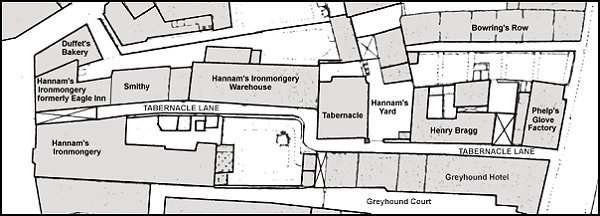
A map
(orientated
through 90°
such that north
is at left) based on
the 1886
Ordnance Survey
showing
Tabernacle Lane
running between
the
Borough at
left and
South
Street at right.
Josiah Hannam's
early ironmongery is
seen at left and
his large
warehouse in
Tabernacle Lane
left of centre.
gallery
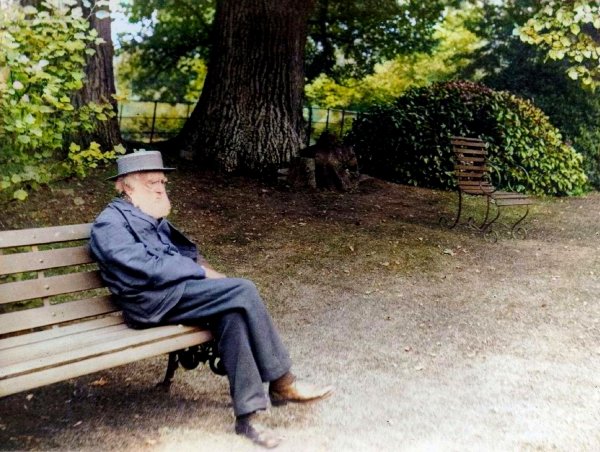
Courtesy of Don
Norman
Alfred Gillett, in later life, in a colourised photograph of 1899.
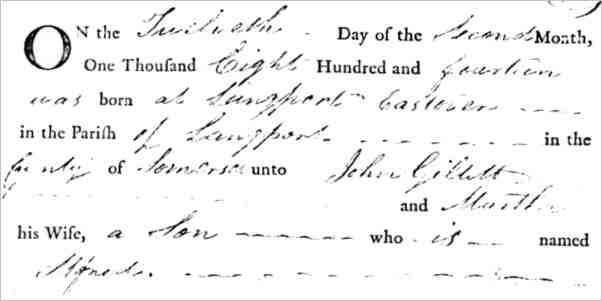
The entry of Alfred's birth from the Quaker birth register, Quarterly Meeting of Bristol and Somerset: Births.
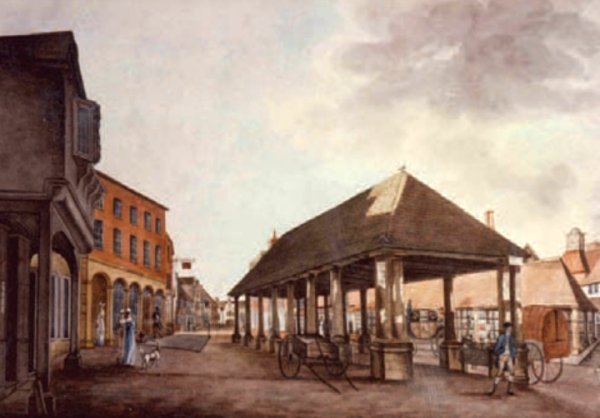
This painting
features in my
book 'Secret
Yeovil'
A painting made in 1810 of the Borough looking towards High Street which runs to the distance at left. The building at centre was the Market House, built in 1740, and behind it to the right was the Butchers' Shambles, built in 1803. The Tolle Hall is seen at right, surmounted by its clock or 'horolitch'. At left, the building with the arched ground floor is the only building surviving today in the Borough and originally the ironmongery shop of William Edwards, then Hannam & Gillett.
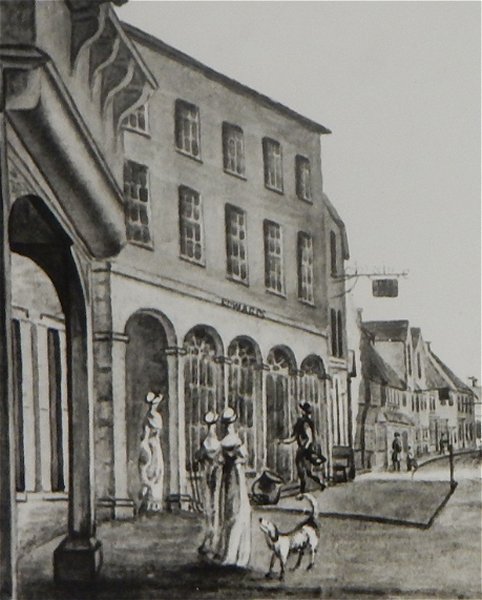
An enlargement of the above painting. At centre, the building with the arched ground floor is the only building surviving in the Borough today and originally the ironmongery shop of William Edwards, whose name appears on the front, then Josiah Hannam and Alfred Gillett. Today it is Superdrug.
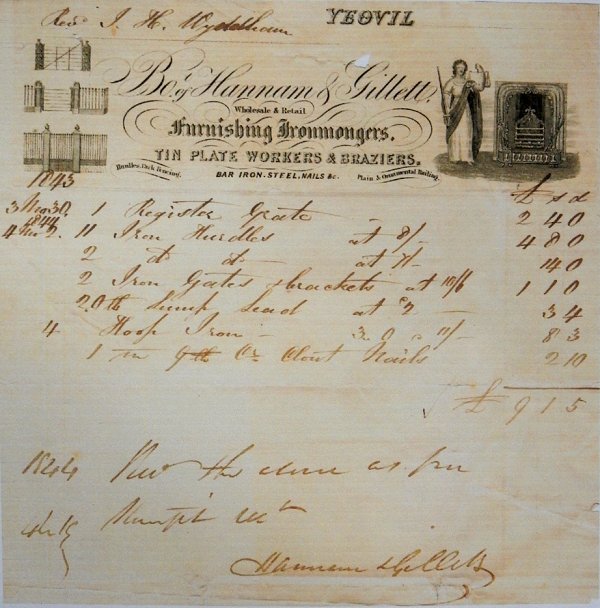
A bill of sale, dated 1843, from Hannam & Gillett.

A horn-handled table knife of about 1845, as sold by Hannam & Gillett, whose mark is stamped into the blade and shown enlarged below.
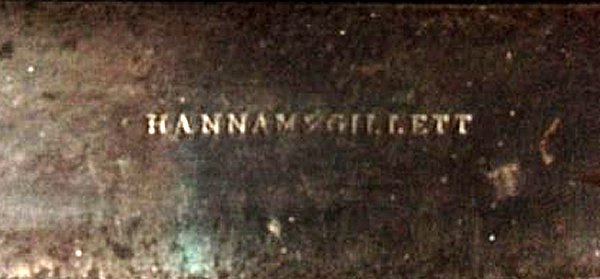
The Hannam & Gillett trade mark stamped into the blade of the above knife.

From my
collection
Spring-loaded wooden finger-stretchers for leather gloves, marked Hannam & Gillett of Yeovil, and therefore dating to the period from 1843 to 1865.
This pair of glove stretchers might have belonged to either a man or a woman. They were used to help ease tight kid gloves so that they would fit over the fingers. They also helped restore the fingers of the gloves after washing, which made them wrinkled and stiff. The user would place the pointed end of the glove stretcher into the finger of a glove and then compress the handle together so that the two ends splayed out, hence stretching the kid leather. During the 19th century the essential mark of a lady was to have small hands and feet and it was partly for this reason that close-fitting gloves were worn. A well-fitting glove was also an important complement to the tailored appearance of men's clothing. Glove stretchers therefore became a vital wardrobe accessory as they assisted the wearer in easing their gloves.
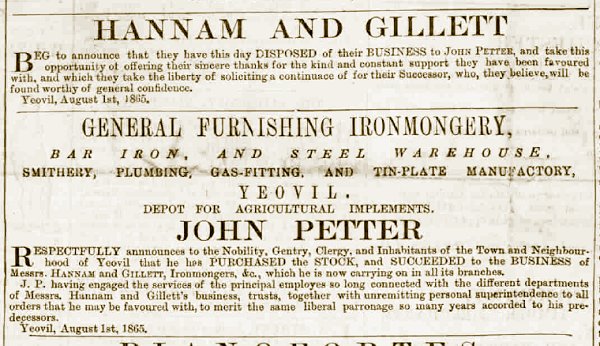
Courtesy of Mike
Taylor
Notice placed in the Western Flying Post's edition of 3 October 1865 announcing the sale of their business to John Petter, above Petter's notice of purchase. At the same time John Perry, having been the manager of Hanham & Gillett's workshops for some 23 years, set up his own Engineering business in South Street in partnership with his son.
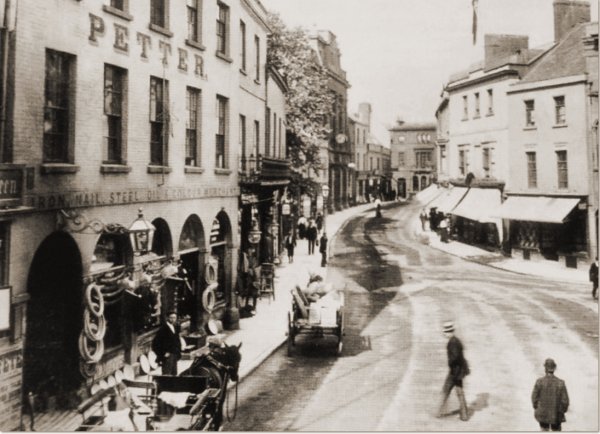
Hannam & Gillett's ironmongery shop in the Borough - by the time of this photograph it was being run by James B Petter.
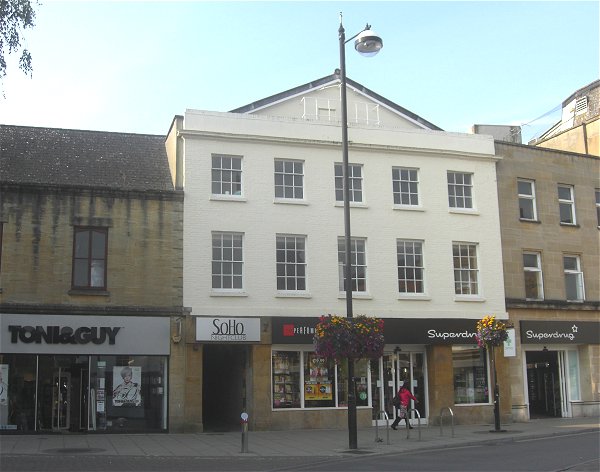
The oldest surviving building in the Borough and originally the ironmongery shop of William Edwards (in 1790), then Josiah Hannam, then Hannam and Gillett, followed by James Bazeley Petter and then Hill & Sawtell. Today it is Superdrug.
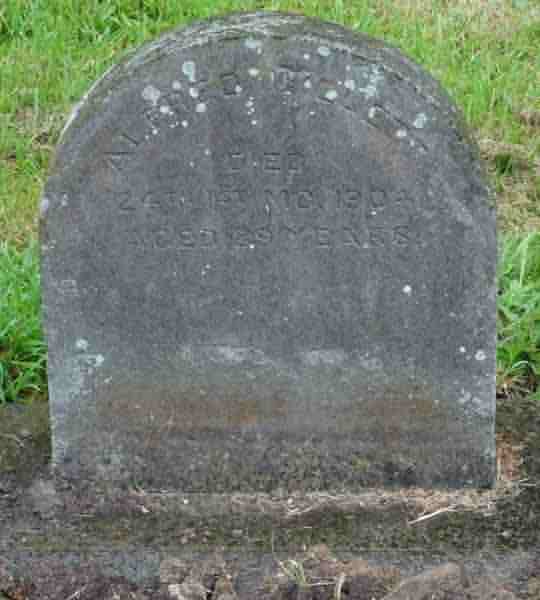
Alfred Gillett's grave marker in the Society of Friends Quaker cemetery, Street.